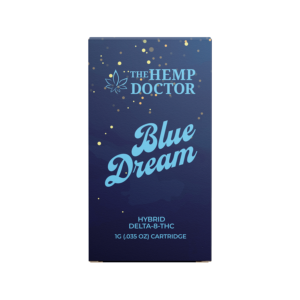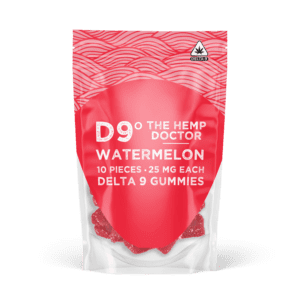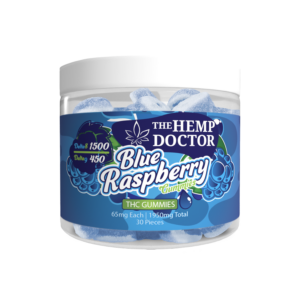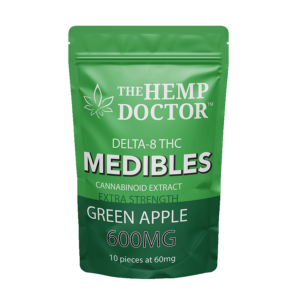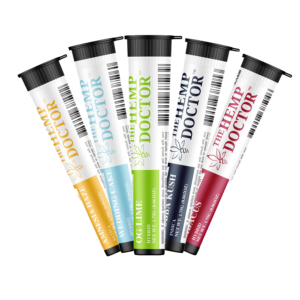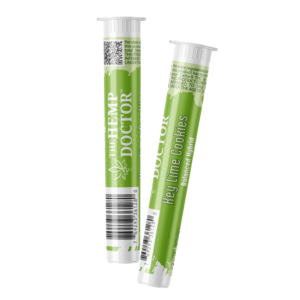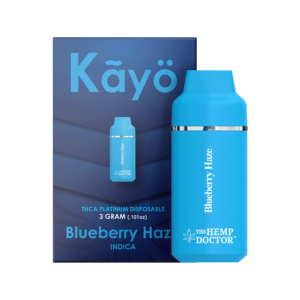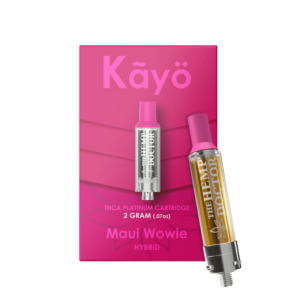We at The Hemp Doctor are proud that an independent laboratory tests all of the products we carry for wholesale. We do this for many reasons, but one of our priorities is so that we can be more transparent with our retailers in ensuring that the labeling on our products is accurate and that those products fall within federal legal guidelines.
We use several different laboratories to test our products, and after testing each of these items, the independent laboratories issue what is known as a Certificate of Analysis (COA). This COA is the lab report with their findings on the product they tested. Each lab may have a slightly different format for the COAs, and not all labs report the same categories of findings. However, most lab reports contain the following areas.
The Header of the Certificate of Analysis
At the top of the certificate, you will be able to determine who conducted the test. Be sure that the tests were performed by an independent third-party laboratory and not the manufacturer or retailer themselves. Aside from this, there will be a unique identification number assigned to the sample, what the sample is, and the name of the sample. In addition, there is often a QR code on the certificate, which you can use to determine whether or not the COA is valid. Aside from this, it will state who is requesting the test, for example, the company that sells the CBD or the manufacturer.
When looking at the COA, you should double-check that the ID number on the certification is the same number as the one on the cannabinoid label. Once you have done this, you can start to look into the product’s profile (i.e., the cannabinoids).
Cannabinoid Profile
The cannabinoid profile is a complete list of all the cannabinoids found in the test sample. This is where you can compare the level of Delta 8 THC or CBD to the label on the product to ensure its accuracy. Directly next to the cannabinoid list, you will find headers like LOQ, Mass %, and Mass mg/g.
- LOQ represents the Limit of Quantification. The limit of quantification is the lowest possible amount that a cannabinoid or other compound can be detected. In order for a cannabinoid or compound to be detected, it must be equal to or greater than the LOQ.
- Mass % is the percentage of the mass of that substance in relation to the entire mass of the sample.
- Mass mg/g is the weight of the cannabinoid or compound within the sample.
One of the main cannabinoids that want to give special notice is the D9-THC line. This is the phytocannabinoid found in large quantities in marijuana that gives the user the feeling of being high. The Federal Farm Bill restricts this cannabinoid so that it must be less than 0.3 percent of the plant sample by dry rate to be considered hemp and, therefore, federally legal. It’s lawfully required that this is below the legal limit. If it’s not, beware of any retailer selling that good.
One special note about CBD hemp flower when looking at the amount of CBD featured within the product. You will notice that there are at least two CBD lines listed in the cannabinoid profile: CBD and CBDA. When examining the level of CBD in the product, you have to add these two together. This is because most of the CBD starts as CBDA (cannabidiolic acid). Then as the hemp flower is heated, the CBDA converts to CBD. This is known as decarboxylation. You may also have a Total CBD line item in your cannabinoid profile. This number is derived from the total of all CBD line items, less a percentage of expected loss during decarboxylation.
It would be best to look at the concentrations and weights when assessing the COA you received. For example, in the weight column for the hemp flower you purchased, you will see the percentage share of the product for each of the cannabinoids.
The concentration is a very similar measurement. However, rather than an entire sample of the hemp flower being considered, it boils down to how many milligrams of the cannabinoid in question would be present if you only had one gram of the flower. Concentration is an important quantity because it can also calculate the possible CBD milligram total in the hemp flower you received.
Terpene Profile
However, cannabis plants are particularly known for their high terpene levels. This is what causes the very pungent and obvious cannabis smell when people are smoking flower. Terpenes are present in other plants like lavender and black pepper.
Each strain of flower has a different terpene profile, which gives it the strain’s unique characteristics. So, if you were to familiarize yourself with the terpenes in your favorite strain, you might actually be able to determine which terpenes you like.
Flavonoids Profile
Flavonoids are in much of what we eat, including most vegetables (like microgreens), fruit, berries, chocolates, and teas. So often, when people talk about a product containing antioxidants, they’re talking about flavonoids with antioxidant properties. Blueberries are an example of this, but flavonoids are also in cannabis products. You can determine the flavonoid content from this section of the COA.
Mycotoxins
Mycotoxins have names like ochratoxin, patulin, ergot, fusarium, or the most common, aflatoxin. Ergot is the most famous of the mycotoxins as it was once known as St. Anthony’s Fire. It’s most common in rye, but it can grow in other grasses. Mycotoxins should not be in your cannabis products, and they must be tested for — these are molds and fungi that can contaminate cannabis products. You want these to be below the LOQ.
Residual Substances
This section reports any solvents or other solutions that remained during the extraction process where the manufacturer removed the hemp oils from the plant matter. This section also shows any heavy metals or other toxins that the hemp plant picked up while it was growing.
Microbiological
Microbiological contaminants are things like salmonella, yeast, E.Coli, and mold — these can weaken the immune system or make those with an already weak immune system quite sick. Most of the harmful microbes are destroyed during the extraction process, but if any remain, this section will display them.
At The Hemp Doctor, We Test Everything!
It doesn’t matter if it is a CBD or Delta 8 THC product or what form that product takes. An independent laboratory rigorously tests everything we carry at The Hemp Doctor. What’s more, we make the Certificate of Analysis from each laboratory available to our loyal retailers. Don’t risk your reputation or your customer’s health by carrying CBD and Delta 8 THC items from a distributor who cannot provide you with a COA on their products. Trust the laboratory-tested products you’ll find at The Hemp Doctor!
